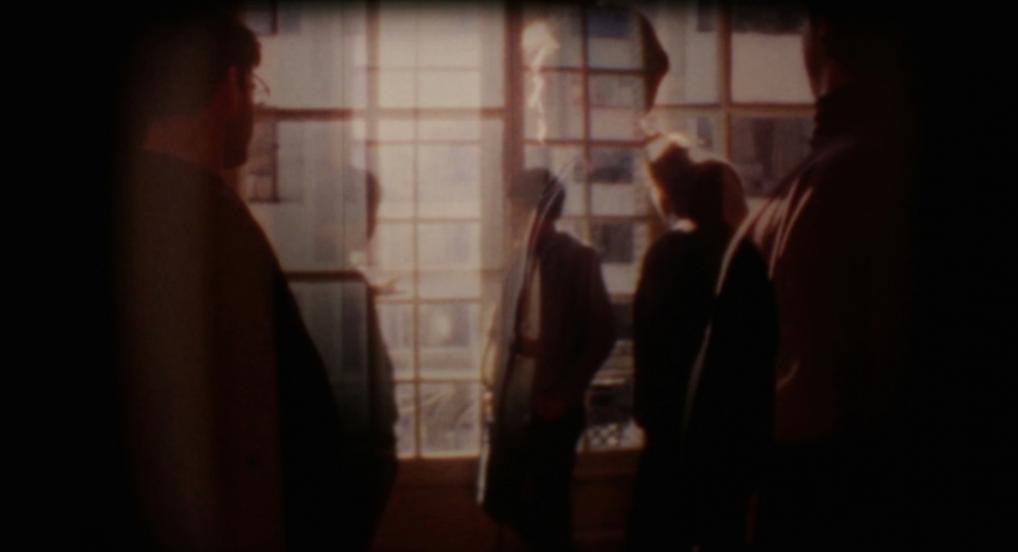Critic and filmmaker Pablo Marín presents an illustrated talk and two programmes on Argentine experimental cinema with works from the 1970s and the present, the two most significant periods in Argentina’s cinema. The films in these sessions stand out for their formal and political radicalism, reflecting the society of the time.
February 4th, 21hArgentine experimental cinema. A bridge between two generations IA figure throws a punch at the camera that triggers a chain reaction of burning and disintegration in the film itself. A group of people dressed in black carry a coffin through the streets of Buenos Aires to the mountains of Patagonia. A house out in the open is meticulously filmed as the last refuge from the harshness of the outside world. A woman who looks very much like a guerrilla woman crosses a jungle landscape, repeatedly retracing her steps to observe her potential pursuers through a pair of binoculars. A camera, separated from its operator, spins blurringly in the middle of a virgin, desolate, natural landscape, creating a kind of cathartic performance.
Filmed during the onslaught of persecution, imprisonment and disappearances of Argentina’s last civil-military dictatorship (1976-1983), the films in this session, made by some of the leading names from the country’s most influential generation of experimental filmmakers, demand to be seen not only as a corpus of modernising, challenging films in terms of their conception of a new cinematographic language but also as first-person accounts of the alienating and oppressive reality of the social and political life of their time. The fact that such a series of films emerged during the darkest times of recent Argentine history, films capable of demonstrating a formal and argumentative freedom that is so risky but nevertheless undaunted by the possible repercussions, remains one of the most illuminating and undervalued paradoxes of Argentine cinema.
- Boomerang, Julio Otero Mancini, 1976, Super-8 to digital, 5 min
- Testamento y vida interior, Narcisa Hirsch, 1976, Super-8, 11 min
- Passacaglia y Fuga, Jorge Honik & Laura Abel, 1976, Super-8, 18 min
- Sensación 77: Mimetismo, Marie Louise Alemann, 1977, Super-8 to digital, 8 min
- Gamelan, Claudio Caldini, 1981, Super-8, 12 min.
Copies courtesy of the artists.Programme curated by Pablo Marin.
February 7th, 17:30h, AuditoriumArgentine experimental cinema. Illustrated talk by Pablo MarínAs in many of the region’s countries, the history of Argentina’s experimental cinema is actually a compendium of several stories, mostly isolated from each other, where each chapter follows the previous one based on a new perspective but prolonging a certain sensibility regarding the medium of film. Taking as its starting point the two sessions that cover the most important evolutionary journey in the history of Argentine experimental cinema (from the 1970s to the present), the talk will reconstruct a possible chronology of first-person cinematic thought created in this country by focusing on certain technological turning points and major films but also on isolated figures and recently discovered works which have unquestionably had a secret and silent influence on the development of a never-ending experimental tradition.
February 7th, 19hArgentine experimental cinema. A bridge between two generations IIUnlike other historical periods, the different realities that make up the thematic journey made by recent Argentine experimental cinema defy any attempt to establish a clear, coherent thread. Consequently, the present conveyed by these films is a context that involves, among other things, debates on native peoples, ecology, employment and gender identity with a rigorous, expansive formalism, albeit indefinable given its hybrid nature.
From naturalistic documentary to a mythological approach to species, from an intimate diary to ethnographic observation inside and outside cities, and from a confessional self-portrait to an essay with a historical touch, the films that make up this session dedicated to Argentina’s current filmmakers (an unstable map that includes artists from all over the world) revolve around the question of how the experimental can give account of its historical context. From a much more chaotic and plural viewpoint than the one that can be seen in the films made by the generation of the 1970s - the other creative golden age of Argentine experimentalism - these films, nevertheless, show a determined narrative intent that goes beyond their elusive tactics of cinematic exploration: to describe a world that is increasingly unintelligible.
- Ý Bera - Aguas de Luz, Jessica Sarah Rinland, 2016, 16 mm to digital, 10 min
- 2019, Jeff Zorrilla, 2019, 16 mm, 9 min
- Aula Magna, Andrés Denegri, 2013, 16 mm, 7 min
- Tres bocetos de casa, Azucena Losana, 2020, Super-8 and 16 mm to digital, 6 min
- Reflejo Nocturno I-IV, Benjamin Ellenberger, 2020, 16 mm, 10 min
- Carta a Lady, Ariel Nahón, 2019, Super-8 to digital, 3 min 30 s
- Ceniza Verde, Pablo Mazzolo, 2019, 35 mm, 10 min.
Copies courtesy of the artists.Programme by Pablo Marin.
- Argentine experimental cinema: some notes and questions - by Pablo MarínText regarding the film series about Argentine experimental cinema (from 4th to 7th of February 2021)


